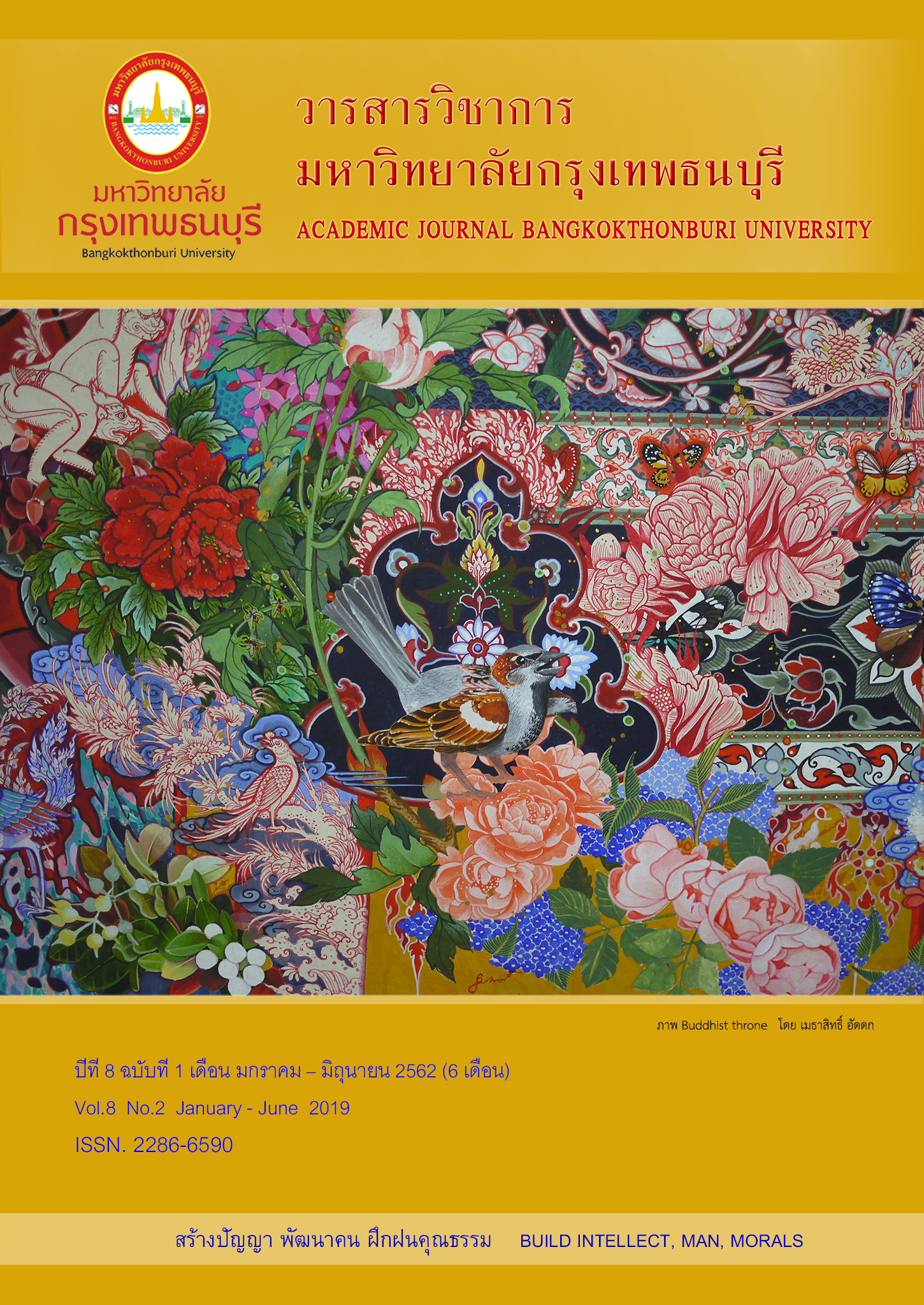The Effects of Case-Based Learning on Nursing Students’ Knowledge Retention
Main Article Content
Abstract
ABSTRACT
A quasi experimental research aimed to evaluate the effects of case-based learning (CBL) on knowledge, retention, and satisfactions among baccalaureate nursing students. A simple random sampling (n 60) was randomly assigned to experimental group (n 30) and control group (n 30). The experimental group was taught by CBL method. The control group was taught by lecture or traditional method. The research tools consisted of 1) two lesson plans of CBL and traditional method, 2) three sets of knowledge tests for pre-test, post -test and knowledge retention 3) satisfaction test. Each test was examined for reliability and validity by three experts. The tools of teaching plan using inter-rater reliability 0.84, pre-test, post-test, knowledge, and retention test by using test analyzing were p .21 to.80, r greater than 0.21, the test of satisfaction by using α Cronbach 0.89. Descriptive statistic, repeated measures ANOVA and independent t-test were used to analyzed the data. The results found that not only experimental group but also control group among 3 phases with pre-test, post-test and were significantly different (p<.001), and using Bonferroni test found that post-test and retention knowledge higher than pre-test, those were significantly different (p<.05).However, post-test higher than knowledge retention that were significantly different (p<.05). Regarding comparison post-test between experimental group and control group found that the experimental group knowledge higher than the control group, that were significantly different (p<.001). In addition, knowledge retention of experimental group was higher than control group, different significantly (p <.001). Therefore, the experimental group was satisfied to teach by CBL, overall at highest level. The highest satisfaction is explanation practice of test and pre-posttest, the lowest level is time consuming. In conclusion, the findings CBL method has receiving attention in nursing education as it is student-center and effectiveness in their knowledge, knowledge retention, and high satisfaction. That should be used in nursing education and other health care professionals.
Article Details
References
Bouchaud, M, Brown, D., Beth, A.,& Swan, B.A.(2017). Creating a new education paradigm to prepare nurses for the 21st Century. Journal of Nursing Education and Practice. Published: May2, DOI:10.5430/jnep.v7n10p27
Couto,T. B,, Farhat, S. C. L., Geis, G. L., Olsen, O., & Schvartsman, C. (2015). High-fidelity simulation versus case-based discussion for teaching medical students in Brazil about pediatric emergencies. Clinics(Sao Paulo). 70(6), 393–399. Available from https://www.ncbi.nlm.nih. gov/pmc/articles/PMC4462571/
Kantar, A. D. & Massouh, A.(2015). Case based learning: What traditional curricula fail. Nursing education today. 35 (8), 8-14.
Kulak, V., Newton, G., & Sharma, R. (2017). Does the Use of Case-based Learning Impact the Retention of Key Concepts in Undergraduate Biochemistry?. International Journal of Higher Education. 6(2),110-117. DOI: 10.5430/ijhe.v6n2p110
Kusoom, W. & Thongvichean, S. (2017). Developing critical thinking skill for nursing students. The Journal of Faculty of Nursing Burapa University. 25(3) Jul-Sep, 1-7(in Thai)
Kusoom, W. & Charuwanno, R. (2017). Concept mapping: An effective strategy for clinical teaching in nursing. Pacific Rim International Journal of Nursing Research. 22(4) Oct – Dec, 263-266.
LaMartina, K., & Ward-Smith, P. (2014). Developing critical thinking skills in Undergraduate nursing students: The potential for strategic management simulations. Journal of Nursing Education and Practice. 4(9), 155-161.
Official of The Education Council. (2017). Development Plan of National Education B.E. 2560-2579. Bangkok: Prikwarngraphics. A-F. (in Thai).
Popil, I. (2011). Promotion of critical thinking by using case studies as teaching method. Nursing Education Today. 31 (2), 204-207.
Promnoi, C., Promtape, N., Tasaneesuwan, S. (2013). Critical Thinking Ability among Senior Nursing Students Faculty of Nursing, Prince of Songkla University.32(3):1-10.
Raurell-Torreda, M.,Olivet-Pujol, J., Romero-Collado, A.,Malagon-Guilera, M. C., Patino-Maso, J.,& Baltasa-Bague, A. ( 2015). Case-based learning and simulation: useful tools to enhance nurses’ education?. Journal of Nursing Scholarship. 47(1), 34-42.
Vogt, M. A. & Schaffner, B. H.(2016). Evaluating interactive technology for an evolving case study on learning and satisfaction of graduate nursing students. Nurse Education Practice Journal. 19, 79-83. doi: 10.1016/j.nepr.2016.05.006. Epub


